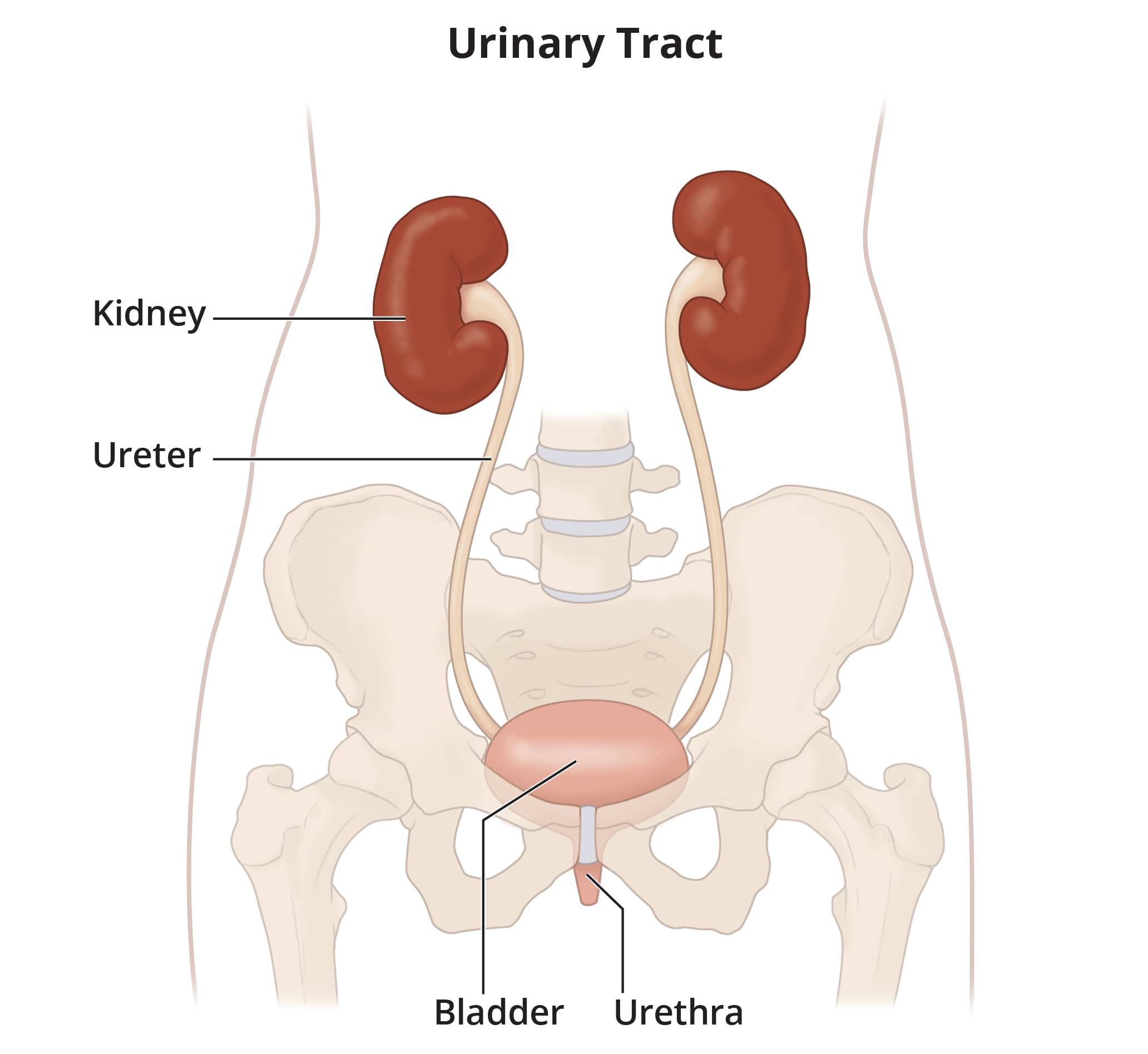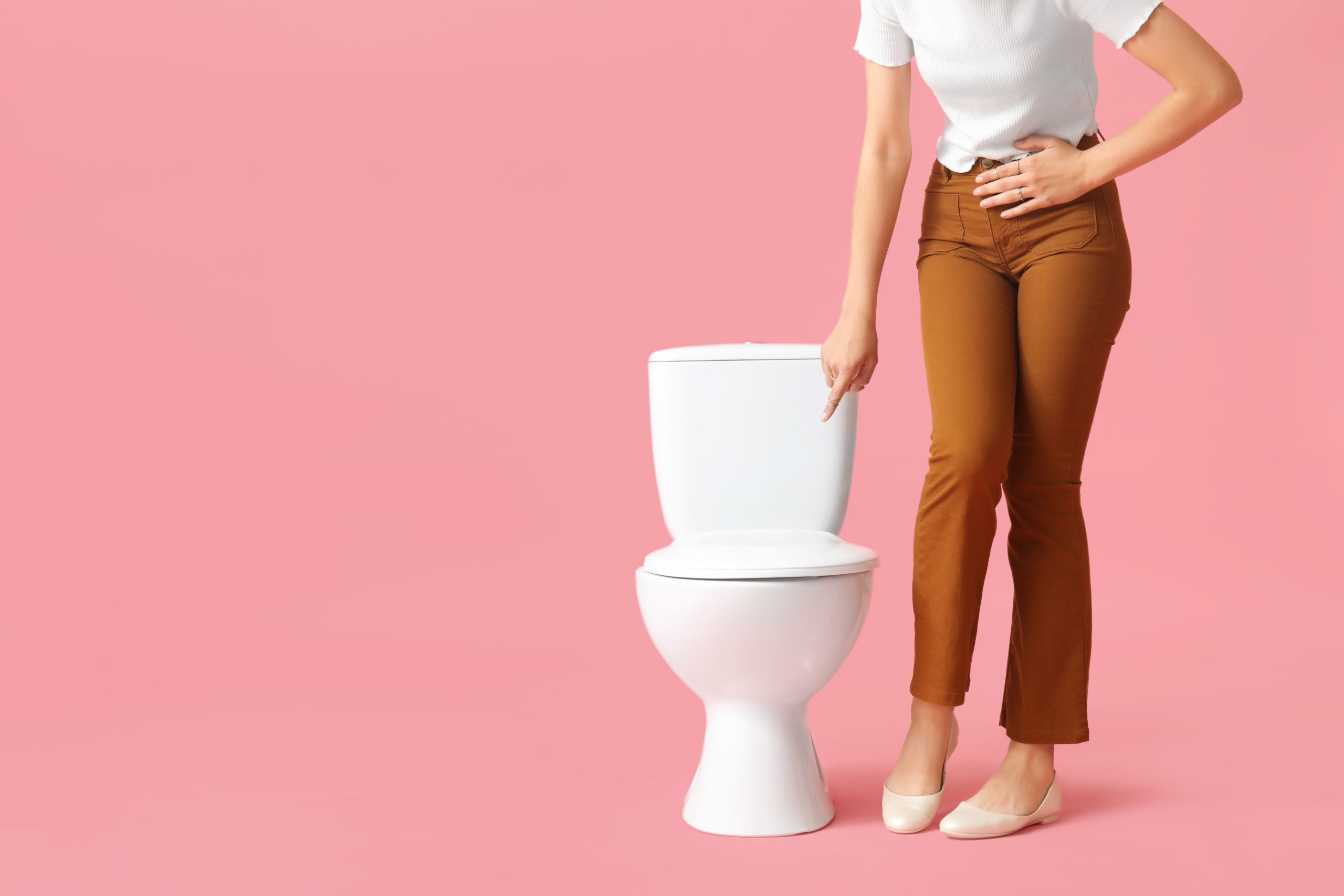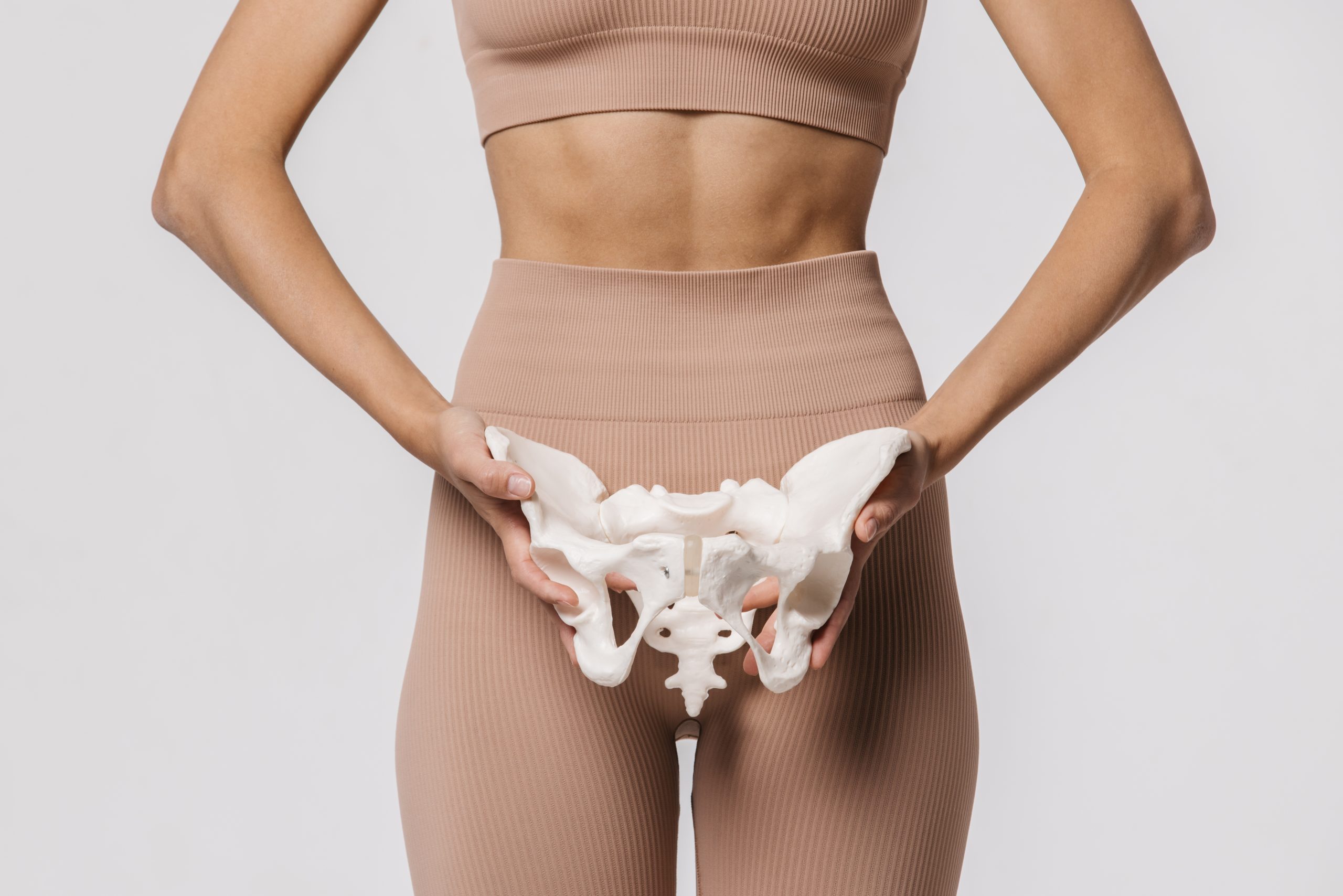
The Urinary Tract & How It Works
What is the urinary tract?
The urinary tract is the body’s drainage system for removing urine, which is made up of wastes and extra fluid. For normal urination to occur, all body parts in the urinary tract need to work together, and in the correct order.
The urinary tract includes two kidneys, two ureters, a bladder, and a urethra.
- – Kidneys. Two bean-shaped organs, each about the size of a fist. They are located just below your rib cage, one on each side of your spine. Every day, your kidneys filter about 120 to 150 quarts of blood to remove wastes and balance fluids. This process produces about 1 to 2 quarts of urine per day.
- – Ureters. Thin tubes of muscle that connect your kidneys to your bladder and carry urine to the bladder.
- – Bladder. A hollow, muscular, balloon-shaped organ that expands as it fills with urine. The bladder sits in your pelvis between your hip bones. A normal bladder acts like a reservoir. It can hold 1.5 to 2 cups of urine. Although you do not control how your kidneys function, you can control when to empty your bladder. Bladder emptying is known as urination.
- – Urethra. A tube located at the bottom of the bladder that allows urine to exit the body during urination.
All parts of the urinary tract—the kidneys, ureters, bladder, and urethra—must work together to urinate normally.
The urinary tract includes two sets of muscles that work together as a sphincter, closing off the urethra to keep urine in the bladder between your trips to the bathroom.
- – The internal sphincter muscles of the bladder neck and urethra stay closed until your brain sends signals to urinate.
- – The external sphincter muscles surround the internal sphincter and provide extra pressure to keep the urethra closed. You can consciously squeeze the external sphincter and the pelvic floor muscles to keep urine from leaking out.
How does urination occur?
To urinate, your brain signals the sphincters to relax. Then it signals the muscular bladder wall to tighten, squeezing urine through the urethra and out of your bladder.
How often you need to urinate depends on how quickly your kidneys produce the urine that fills the bladder and how much urine your bladder can comfortably hold. The muscles of your bladder wall remain relaxed while the bladder fills with urine, and the sphincter muscles remain contracted to keep urine in the bladder. As your bladder fills up, signals sent to your brain tell you to find a toilet soon.
Why is the urinary tract important?
The urinary tract is important because it filters wastes and extra fluid from the bloodstream and removes them from the body.
What affects the amount of urine you produce?
The amount of urine you produce depends on many factors, such as the amount of liquid and food you consume and the amount of fluid you lose through sweating and breathing. Certain medicines, medical conditions, and types of food can also affect the amount of urine you produce. Children produce less urine than adults.
How can you keep your urinary tract healthy?
You can help keep your urinary tract healthy by following some basic tips.
Drink enough liquids, especially water. If you’re healthy, try to drink six to eight 8-ounce glasses of liquid each day. You may need to drink more if you have kidney stones or bladder stones. At least half of your liquid intake should be water. You might need to drink less water if you have certain conditions, such as kidney failure or heart disease. Ask your health care professional how much liquid is healthy for you.
Keep your bowels regular. Regular bowel movements are important to your bladder health. You can promote both bowel health and bladder health by
- – making healthy food choices. You can keep your urinary tract healthy by sticking to an eating plan that includes lean proteins, whole grains, fiber-rich breads, nuts, colorful berries, fruits, and vegetables to promote regular bowel movements.
- – living a healthy lifestyle. Get regular physical activity, limit your alcohol intake, cut down on caffeinated food and drinks, and don’t smoke.
Go whenever you need to. Often, people will hold their urine because it’s not a good time to go to the bathroom. However, holding in your urine for too long can weaken your bladder muscles and make it harder for your bladder to empty completely. Urine left in your bladder can allow bacteria to grow and makes you more likely to develop a urinary tract infection (UTI).
Develop healthy bathroom habits. Take enough time to fully empty your bladder when urinating—don’t rush it. Urinate after sex to flush away bacteria that may have entered the urethra during sex. Clean the genital area before and after sex. If you’re a woman, wipe from front to back, especially after a bowel movement, to keep bacteria from getting into the urethra.
Stay in tune with your body. Pay attention to how often you feel the urge to urinate. Take note if you need to urinate more often than usual, if your urine leaks, if it becomes more difficult for you to begin urinating, or if you feel you’re not able to completely empty your bladder. These changes may be early signs of different urinary tract problems. Talk with your health care professional if you notice any of these signs. You may be able to prevent a condition from becoming more severe if you get help early on.
Do pelvic floor muscle exercises. Pelvic floor exercises, also called Kegel exercises, can keep your pelvic floor muscles strong and maintain healthy bladder and bowel function. Both men and women can benefit from pelvic floor muscle exercises.
Check out these articles to learn more about Kegel exercises:
To learn more about urologic diseases visit the National Institute of Diabetes and Digestive and Kidney Diseases (NIDDK) website.
Need Help?
Have leaky bladder symptoms, urinary frequency, or urgency? Contact our office directly to schedule an appointment. Dr. Peter Lotze and his team are here to help! We have office locations in the Houston, TX (Texas Medical Center) and in The Woodlands, TX.
Read this post to learn more about what a urogynecologist is: What Is a Urogynecologist?
Connect With Us
Be sure to check our blog regularly for new posts, and follow us on Facebook and Instagram @PeterMLotzeMD for health and wellness tips and more!



